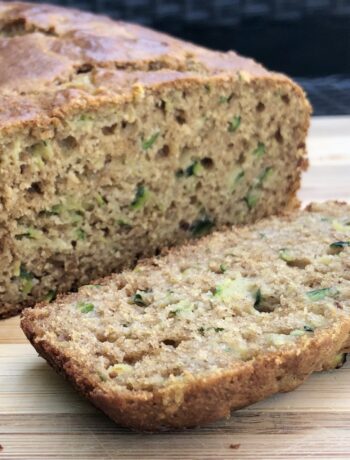This is the recipe for our pizza dough that we have every Saturday night. It’s a relatively high hydration dough.
Note, I use bread flour to feed my starter, but for the pizza dough, I’m currently using Power Flour, a high protein flour I buy in 50lb bags from Costco. Normal bread flour works great as well.
Sourdough Pizza
Ingredients
- 513g water
- 432g active starter (50% water / 50% flour by weight)
- 35g olive oil
- 38g honey
- 900g bread flour or other high protein flour (see above).
- 24g coarse kosher salt
- 22g diastatic malt (optional)
Instructions
Dough Schedule:
Day 1 (for me, Thursday for Saturday night pizza) around 7 or 8am, take 120g starter (for me, from fridge where I store when not using) and thoroughly mix in about 60g bread flour and 60g water.
Day 1 around 2pm - double the starter by adding about 120g bread flour and 120g water. This will give you 480g of starter - 432g for the recipe and 48g left over to feed and return to the refrigerator.
Day 1 - check for peak starter activity starting around 5pm. It will be earlier in the Summer or a warm environment than in Winter/cold. Look for bubbling, active starter. If you see small bubbles or foam, it's starting to decline, but still usually ok to use. If you see liquid on the top, it's been too long - start over. I mix the starter in a 32oz plastic yogurt container. With a straight sided container like this, you can put a rubber band around the container at the level of the starter (look at the container with a window or other light behind it) and move the rubber band up the container to the starter level as it rises and gets active. Peak activity is the highest point the starter level reaches before beginning to settle back down.
Day 1 - when starter is at peak activity, per above, make the dough. I use a Kitchen-aid mixer with a dough hook. I put the bowl on a scale and add water, starter (it should float on the water if active), oil, honey, flour and malt if used. After mixing to a ragged dough, add the salt and mix well. Remove from mixer, shape into a ball, and put the dough in a large glass bowl (sufficient for expansion) that's been coated lightly with olive oil. Let rest for about 20 minutes. Stretch and fold a few times in the bowl. Let rest another 20 minutes and stretch and fold again. Ideally, the dough should start feeling silky and stretchy.
Day 3 (for me, Saturday) - Remove the dough from the refrigerator between 10:30am and 11:30am - earlier in the Winter to allow a longer rise and later in the Summer. Cut and shape into 8 equal sized balls. I weigh the entire ball and divide by 8 to get the weight of each pizza and weigh them out accordingly. Place each on a lightly floured sheet pan. lightly grease the tops of the balls with olive oil and cover with plastic wrap and leave at room temp for about 4-7 hours until the balls have expanded and poking them leaves a dent that bounces back somewhat. I use a dough tray with a lid greased with olive oil to avoid the plastic wrap and oiling the top. The proofing time is highly variable to room temp (season) and other factors. For example, my dough tray insulates the dough balls and so requires a longer time to proof. If I'm short on time, using the plastic wrap over a sheet pan will make them proof much faster as will placing them in a warmer place in the house.
Learn to identify when the balls are over and under-proofed. When they are under-proofed, the dough will still feel dense and will bounce back when poked. When you shape an under-proofed ball into a pizza, it will tend to want to contract back, the crust will wind up thicker and puff up more. When over-proofed, the dough will feel flabby with large bubbles in it. It will be more delicate and prone to holes tearing in it when shaping it into a pizza. And the crust will tend to not brown as well and, if gone far enough, will begin to give the pizza an off or sour taste.
When ready to make pizza, gently lift a ball (which will have flattened out to some degree) to a surface lightly covered with cornmeal. This is a high-hydration dough so should be handled more carefully than other pizza doughs. Gently press and shape into pizza shape (not pressing crust). Pull up by one edge being careful not to let the dough fold and stick to itself. Letting one side lay across your fists, gently stretch the outer edges as you rotate the dough. Try not to stretch the edges that will form the crust. Lay onto a sheet of parchment. I find this dough is too wet to reliably lay directly on a peel and successfully get it off the peel into the oven. You'll likely have to do some further stretching into an even circle after laying it on the parchment. Add toppings and use a peel to put the pizza (on the parchment) onto a pizza stone or steel. I prefer using a baking steel, but both work great.



No Comments